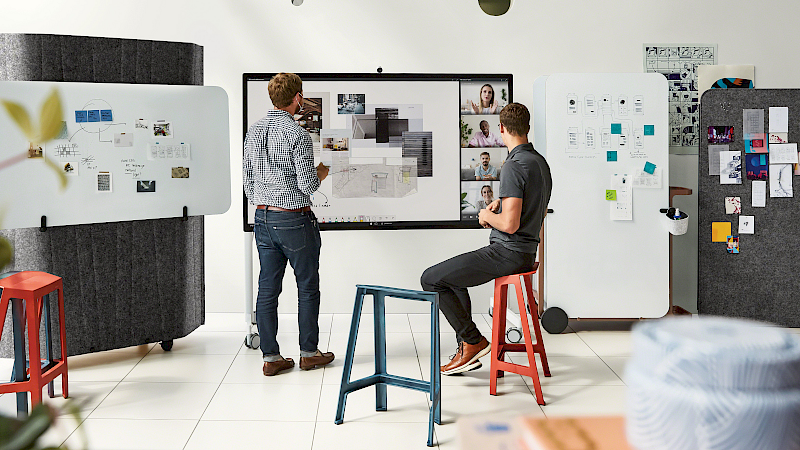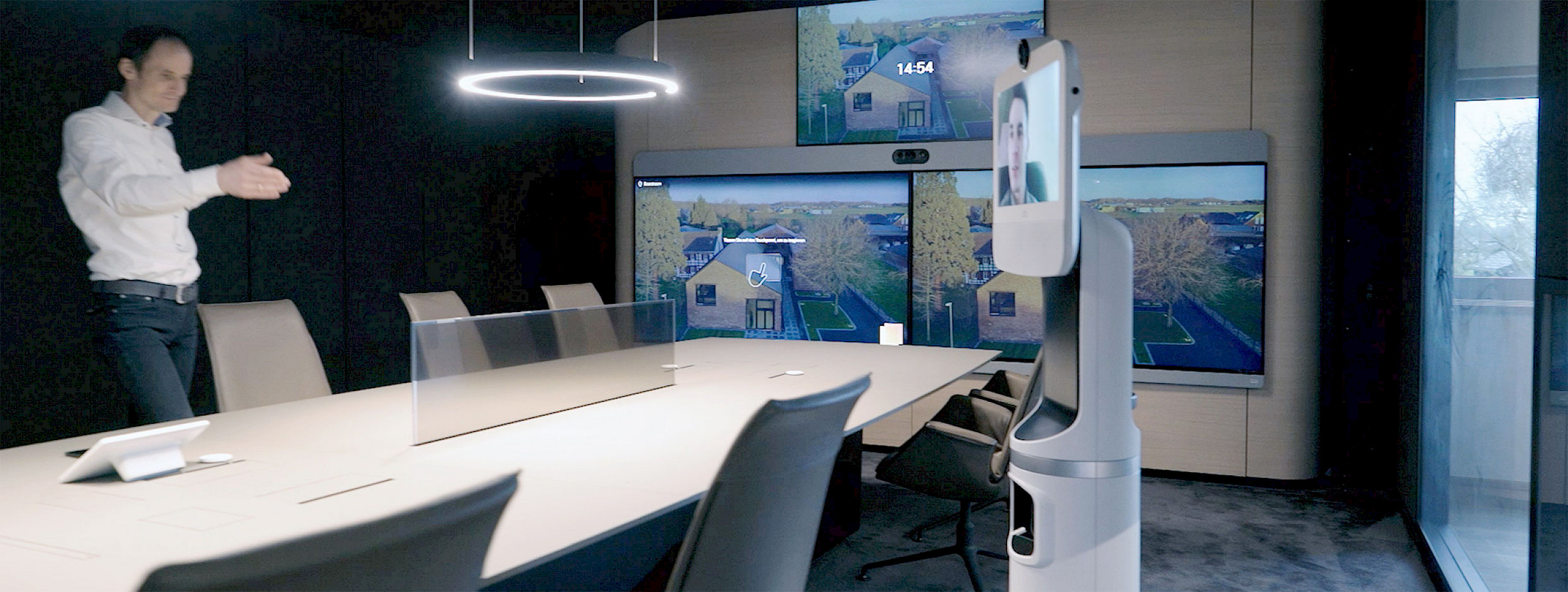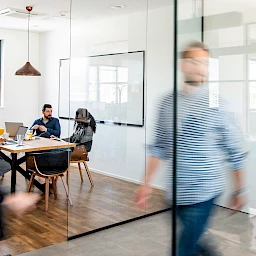The coronavirus pandemic and the parallel acceleration of digitalization, as well as the increased use of smart applications and modern video technology, have radically transformed the world of work.
Although the entry into the transformed world of work might have been bumpy, one thing is absolutely clear: hybrid working, and the associated remote presence of many colleagues, only function because of smart technology. Here, webcams and video conference solutions are absolute basics and essential for every company. The furnishing experts in the office furniture sector assume that in the future at least 60% of all meetings will be hybrid in nature (IBA survey of Quality Office consultants, July 2021). The success of hybrid working will depend on finding an answer to the question of how companies can best bring together their employees who work directly in the office with those employees who are working from home or other places.
Important success factors in this area include the quality of communication via microphone, the exclusion of background noise, and adapting the acoustics of the respective spaces to the requirements of hybrid meetings. But it’s not only the technical framework that has to be tailored to hybrid working. The focus is also shifting toward the provision of suitable spaces. Because of the significant increase of many small meeting situations, smaller rooms equipped with conferencing technology will become more important in the future. In these smaller rooms, between two and eight people can communicate with participants in other locations.

Practical tips for spatial design
ROOM DIMENSIONS: During the planning process, it is important to make sure that the room dimensions are suitable for the expected number of participants. Because of the possibility of hybrid participation, the number of participants who are expected to be physically present decreases. Large rooms with only a few people make it difficult to create a friendly atmosphere.
ROOM-IN-ROOM SYSTEMS (PODS): In situations where no separate rooms suitable for hybrid meetings are available, room-in-room systems, which are also known as pods, are a good solution. Here it is important that the pods be screened off acoustically, and if possible visually, and that they be well ventilated.
BACKGROUND: Almost all conference systems offer the use of background images or ways to soften the real environment. This works quite well, but never perfectly. It’s better to make sure the real environment of the conference provides a suitable background. If conference rooms with transparent walls are being used, keep in mind that the virtual participants can also be distracted by the activities going on in the adjacent rooms.
ROOM ACOUSTICS: Good sound insulation between the conference room and the adjacent spaces is important, but it alone is not enough. Good acoustics within the meeting room are also important, because defects such as overly long reverberation periods or flutter echoes are emphasized by conferencing technology. That makes meetings unnecessarily strenuous for all the participants.
The interplay of space, technology and people has to function in order for hybrid work structures to be used successfully. Intelligent and intuitively usable technology is the prerequisite for this.
But let’s go one step further and talk about the technology in Office 4.0 ...

New technologies open up leeway
Room booking systems, face tracking, sensor technology and the app-controlled use of communication technology are already available today.
The future belongs to technology packages that use cameras and microphones directed toward the individuals who are talking. Upgrading such equipment brings huge advantages, because these technologies enable communication that is closer to reality than web conferences with static cameras.
In the best case, the new systems will offer so much flexibility that the in-person participants can move freely throughout the room.
Suitable solutions for the remotely present participants also exist today. Our initial screen shows an application that is used by the media technology specialist zgoll: GmbH. Here visitors can log in via a mobile robot that will also help them move through the space together with the hosts. Alternatively, by adapting the height of the monitor the visitors can sit down at the table together with the hosts.
Hybrid cooperation is increasingly becoming a standard procedure. Now it’s time to supplement it with suitable spaces equipped with the right technical infrastructure.







